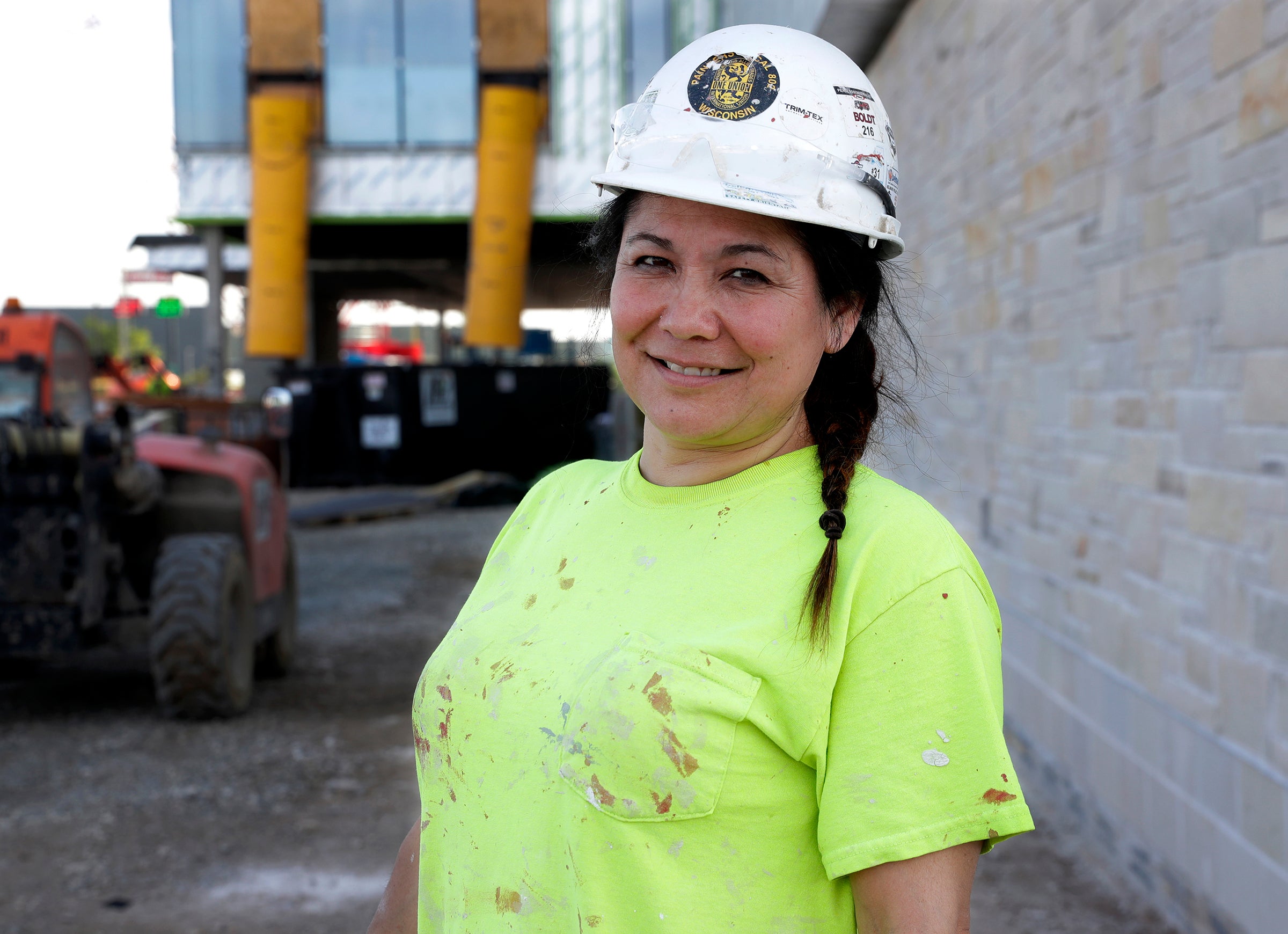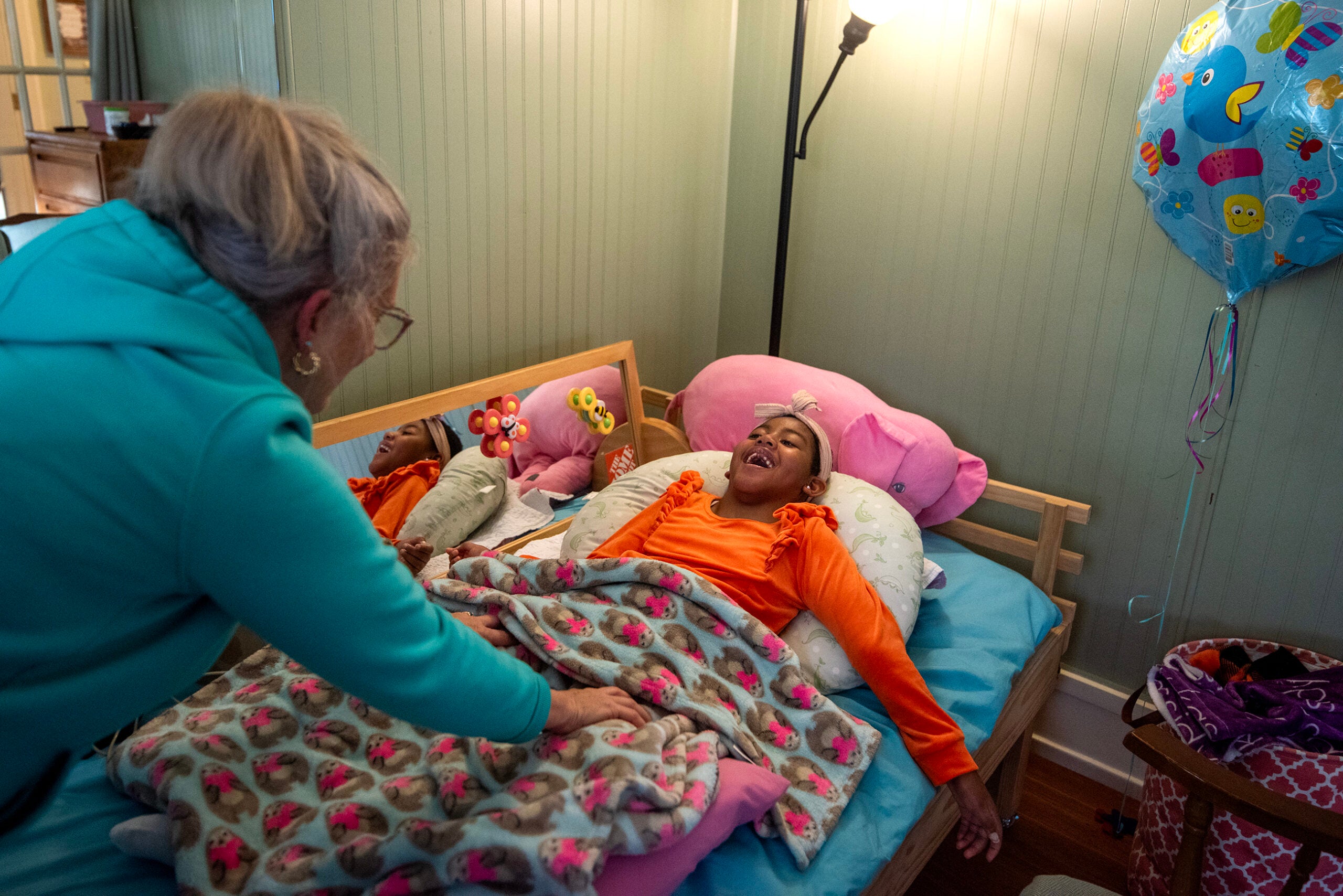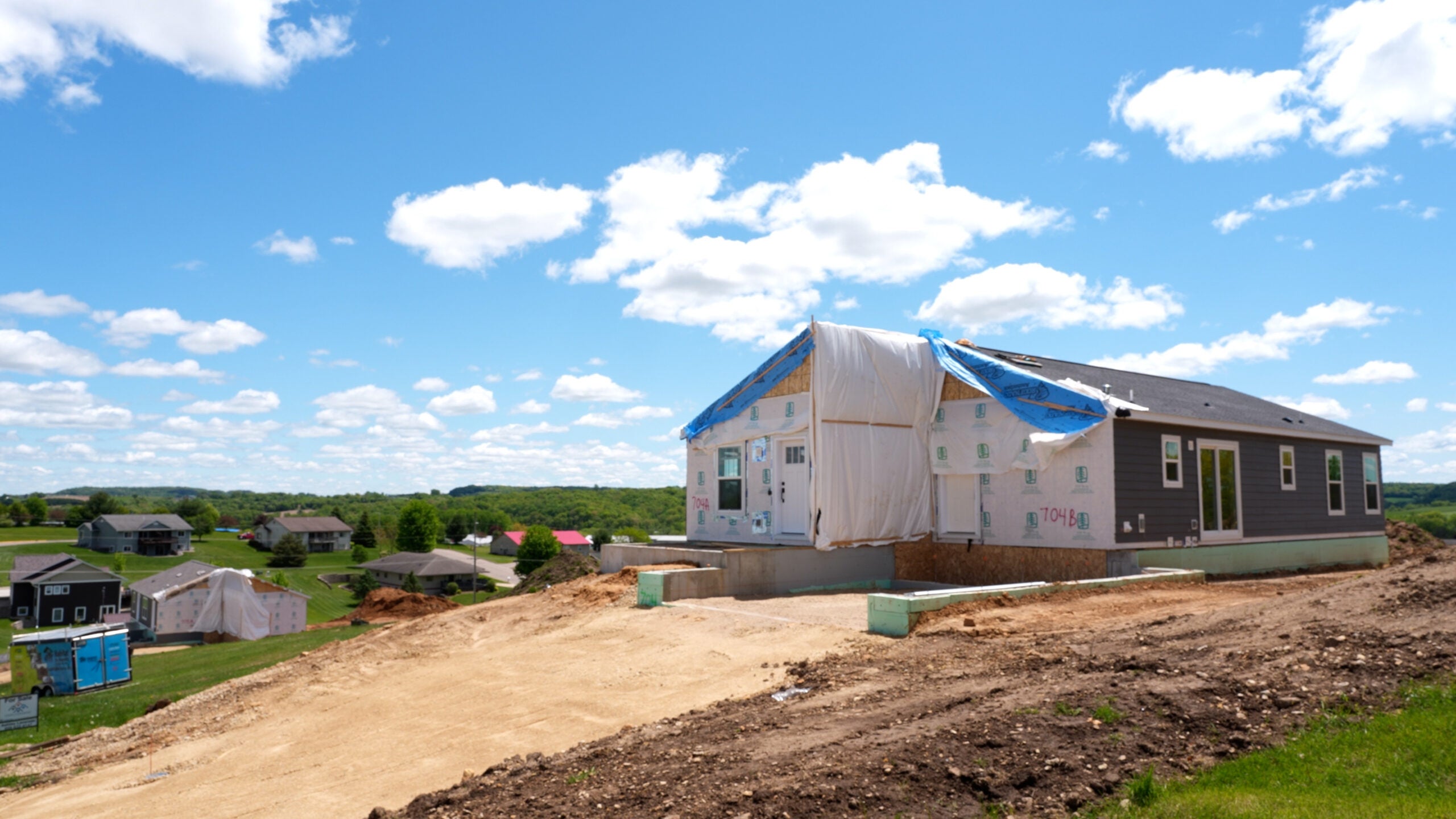Shannon Pikka loves the work-life balance of her job in construction. She left an office job in insurance and now enjoys being up early and working with her hands as part of a drywall finishing crew. The single mother’s workday ends around 3 p.m. — just in time to greet her two children from school.
“Kids are coming home at that time, and we got the whole evening now together,” Pikka said. “Our job should not dictate our lifestyle.”
Despite changing careers nearly four years ago, she’s still earning apprentice wages due to setbacks during the pandemic when her youngest was in third grade and schools switched to distance learning.
News with a little more humanity
WPR’s “Wisconsin Today” newsletter keeps you connected to the state you love without feeling overwhelmed. No paywall. No agenda. No corporate filter.
“I would be a journeywoman right now had I had a babysitting option so I could have still shown up for work and gained all those hours in the year — so that set me back,” the De Pere, Wisconsin resident said.
The difference is a full $9 an hour. As it is, she’s making just shy of $27 an hour. But with two school-aged kids in her household, paying all of the bills is a stretch. Pikka gets no child support, and she relies on her parents who live nearby to provide child care for the days she needs to be at a remote jobsite for days or even weeks at a time.
“I’m just trying to make ends meet,” she said.
But government statistics show many in the community earn a lot less than she does.
The state Department of Workforce Development estimates that two adults working full-time earning $25.20 an hour each is just enough to be self-sufficient in a household with two children when factoring in the cost of housing, transportation, food and child care.
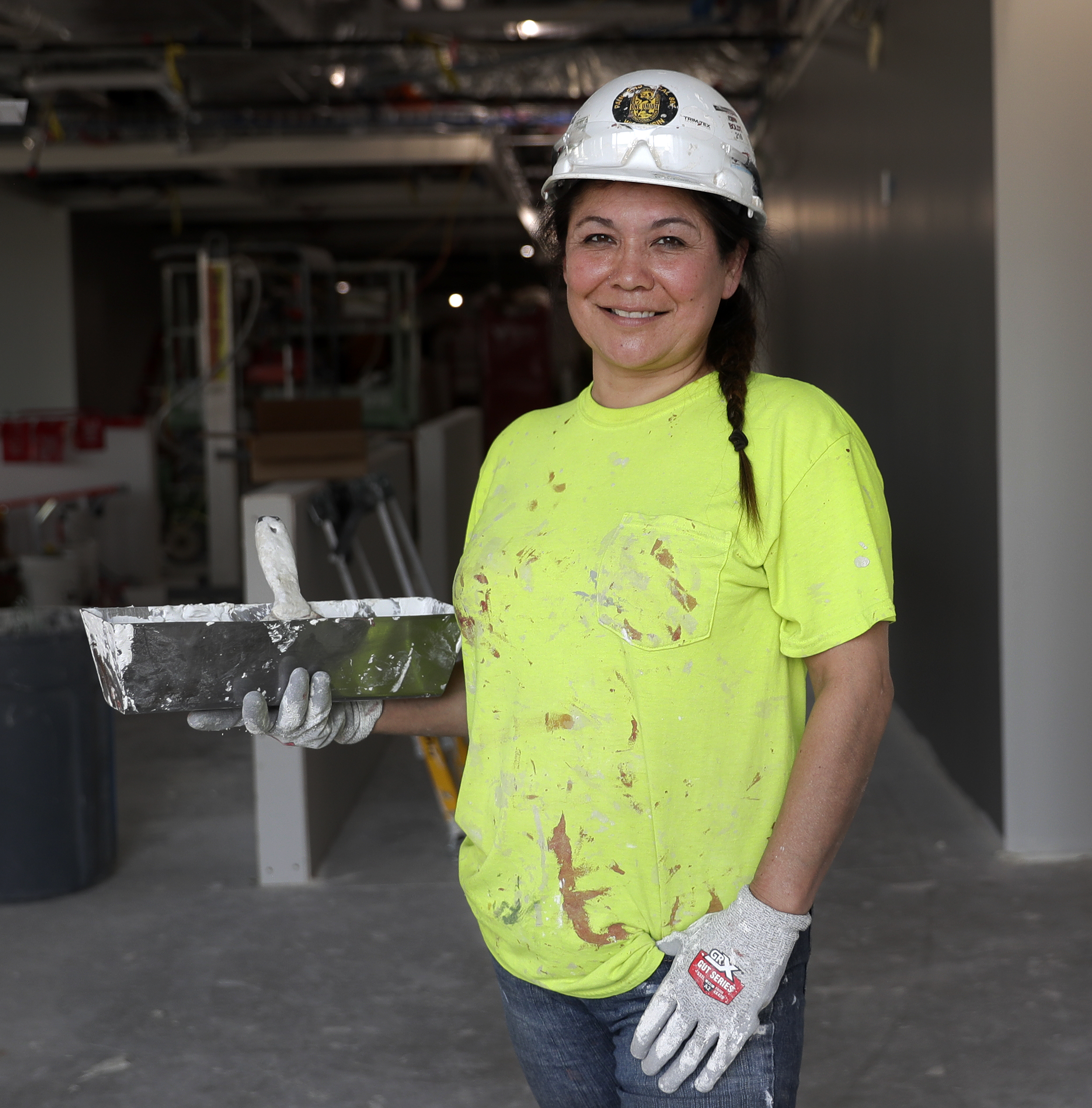
The average wage in Green Bay, according to the most recent federal Bureau of Labor Statistics report, was $26.29 in 2022. But the median earnings were $21.84 an hour, meaning that half of workers earn less than that.
In other words, many workers supporting families in northeast Wisconsin are just squeaking by, especially at a time when the cost of living is increasing in Wisconsin and across the nation.
“Self-sufficiency is attainable for the majority of full-time workers if children are not involved,” wrote DWD spokesperson Jennifer Sereno. “However, the situation rapidly changes when just one child is brought into the picture, let alone multiple.”
That’s because the cost of child care can rival tuition at a state university, the Wisconsin Policy Forum wrote in a recent report. A state survey of child-care facilities found the annual median cost for school-aged children starts at around $10,000 but can be as much as $40,000 a year for high-quality infant care in urban areas like Green Bay and Oshkosh.
Earnings too high to qualify for benefits
Pikka’s household has no second income, yet she is still well above the level to qualify for many public assistance programs.
Her story represents a growing segment of Wisconsin’s working population: those earning too much to qualify for most public assistance programs but too little to afford anything but basic necessities. United Way studies this group of people known as ALICE: Asset Limited, Income Constrained, Employed. Its latest report shows 23 percent of Wisconsinites fit into this category.
Help such as food assistance through the state’s FoodShare program, subsidized child care under the Wisconsin Shares program care and BadgerCare Plus health insurance are not available to many such families, including Pikka’s.
“These are people who are working,” said Trisha Witt, who works in advocacy for United Way Fox Cities in Appleton. “They’re earning more than the federal poverty level but less than Wisconsin’s basic cost of living.”
When you add in the 11 percent of people living below the poverty line, the percentage of Wisconsinites struggling financially is 34 percent, according to the United Way report.
In northeast Wisconsin, the figures are similar, except in urban areas, where the numbers are starker. In Oshkosh, for example 41 percent of residents are either below poverty or not making enough for basic needs.
Barriers to prosperity
It’s not due to a lack of employment. Official unemployment is at record lows with federal agencies reporting Wisconsin at a record 2.4 percent in April. Northeast Wisconsin was hovering at 2 percent or less.
But while very few able-bodied adults are outside of the workforce, lack of affordable child care and transportation can keep people from working and meeting their basic needs.
“No matter what the economic conditions are like,” said Ryan Long, a regional economist for the state Department of Workforce Development in Green Bay, “we know for certain that there are going to be folks who face barriers to work.”
On paper, Pikka has been relatively successful. For 15 years, she sold insurance but entered the trades after becoming disillusioned with a desk job. But a string of abusive partners who ended up incarcerated or moving out of state has left her the sole breadwinner for her family.
Her life had been full of hardship from when she was left at a hospital in Colombia where she was born and never picked up. Pikka spent the next three years in an overcrowded South American orphanage where she said she suffered physical abuse.
“I have scars on my body because the nuns could not control the orphanage, so they beat us up,” she said.
At age 4, a pair of school teachers adopted her and raised her in northeast Wisconsin. If it wasn’t for her parents helping with child care, Pikka said she could never maintain her higher paying career in construction.
“I wouldn’t be able to do it,” she said. “I’d have to go back to my office job.”
The dearth of affordable child care in Wisconsin is well-documented. The staff shortage in day care centers itself has a ripple effect. On paper, there are roughly 37,500 slots for children in the 19 counties in northeast Wisconsin. But a survey last year of 1,173 child care centers in Wisconsin found nearly half were below capacity.
“It is important to note that this is licensed capacity and providers may not be using all slots due to staffing shortages, low enrollment, or other factors,” wrote Gina Paige, a spokesperson for the state Department of Children and Families, which licenses day care facilities.
Hot housing market constrained by supply, rising interest rates
Affordable housing is another key to family sustainability. But a shortage of supply has driven up rental prices across the board.
“It doesn’t really matter what the availability of jobs is like if young folks are getting priced out of certain areas because housing is too expensive,” Long said.
Real estate data show that housing prices across the state continue to rise even as sales slump due to constrained supply and rising interest rates that have added to the cost of borrowing.
In April 2023, the median house in northeast Wisconsin cost $260,000. That’s $23,000 less than the statewide median. But the median cost rose 7 percent across the region in the previous year, similar to the increase statewide.
All this happened while real estate transactions slumped after interest rates spiked from historic lows at below 3 percent to around 6.6 percent for a fixed 30-year loan in May.
The numbers are stark: There were more than 1,500 residential home sales in June 2022, just as the Fed hiked interest rates for a third time in response to inflation fears. Ten months later in April of this year, the region saw half as many closed deals at 777.
Property owners who are locked in with relatively low interest rates are less likely to list their homes now because they’d pay higher rates on their next property, said real estate broker Kevin Jones, co-owner of Adashun Jones in Fond du Lac.
“There are more people pursuing the few properties that are on the market,” he said.
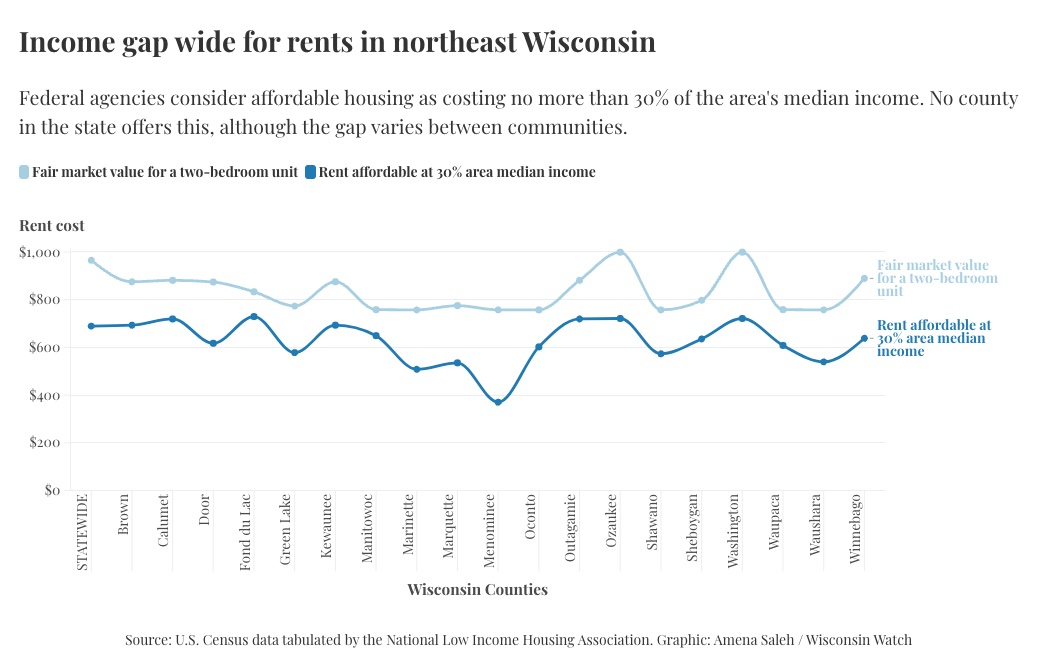
Houses harder to find, more expensive to rent
The region has already faced supply constraints as Baby Boomers live longer and stay put, leaving fewer properties for younger aspiring homeowners.
“We have healthy Baby Boomers — I’m one of them — who are staying in their homes longer, and millennials who are clamoring to find homes and are at a disadvantage because they increasingly have to rely on borrowed money,” Marquette University economics professor David Clark said at a recent economics forum.
He said many millennials of child-bearing age — those born in the 1980s and ‘90s — “kind of got dealt a bad hand” coming out of the Great Recession with a weak labor market and so “logically and rationally stayed out of the market” during the time when working Americans would tend purchase first homes.
Jones, the real estate broker and Fox Valley landlord, said the rental housing market is also hot with rents increasing by 10 percent to 20 percent annually.
“I think it’s because a lot of the rentals have been consolidated into a small group of investors — that’s one side of the story,” he said. “And the other side is there’s just not enough homes and developments that are being created.”
In 2022, the National Low Income Housing Coalition — an advocacy group — listed the fair market price for a two-bedroom unit in northeast Wisconsin at between $757 in rural counties to $889 in the Oshkosh area . The study, citing U.S. Census figures, also found the average rent for a two-bedroom apartment in counties across northeast Wisconsin — for that matter, across the entire state — is higher than the recommended 30 percent of the average income renters in those counties make.
Home ownership remains elusive for Pikka. For three years, she has rented a two-bedroom apartment for $875 in De Pere where she enjoys living despite the higher housing prices compared to neighboring Green Bay. Once she works enough hours for journeyman wages, she said she’ll try to buy something.
But Pikka, who is 41, said that’s at least three years away. In the meantime she is pursuing another dream. Pikka would like to visit Colombia with her kids to reconnect with her birth parents.
This story is part of the NEW (Northeast Wisconsin) News Lab’s series, Families Matter, covering issues important to families in the region. The lab is a local news collaboration in northeast Wisconsin made up of six news organizations: the Green Bay Press-Gazette, Appleton Post-Crescent, FoxValley365, The Press Times, Wisconsin Public Radio and Wisconsin Watch. The University of Wisconsin-Green Bay’s Journalism Department is an educational partner. Microsoft is providing financial support to the Greater Green Bay Community Foundation and Community Foundation for the Fox Valley Region to fund the initiative. The mission of the lab is to “collaborate to identify and fill information gaps to help residents explore ways to improve their communities and lives — and strengthen democracy.”

